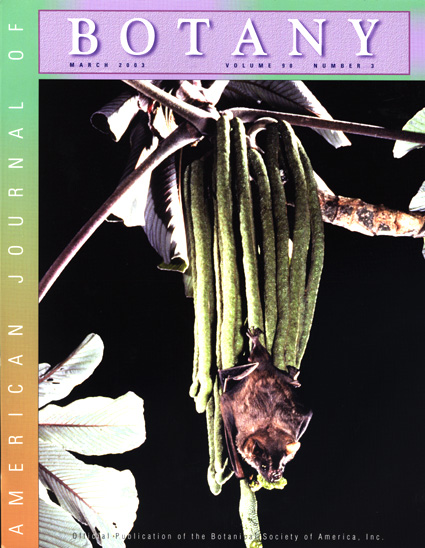
Cover Illustration: Artibeus lituratus, the
great fruit bat, feeding on the infructescences of Cecropia sp. Species
of Artibeus are important dispersers of Cecropia. Morphological
and anatomical study has revealed that the dispersal unit of Cecropia is
the fruit not just the seed. Bats consume the fleshy floral parts surrounding
the fruits and disperse the fruits. Removal of the floral parts by bats increases
seed survival and subsequent germination. A manuscript by Lobova et al. describes the fruit morphology and dispersal ecology of Cecropia, a genus that plays a vital role in the regeneration of Neotropical Forests. The paper draws on an extensive literature and original observations to illustrate the role that frugivorous bats play as dispersers of Cecropia. The authors demonstrate that the dispersal unit of Cecropia is the fruit and not just the seed, clearing up a prevailing confusion. Their anatomical data combined with the ecological observations create an integrated, functional understanding of dispersal biology. American Journal of Botany, 2003. 90 (3). Lobova T. A., S. A. Mori, F. Blanchard, H. Peckham & P. Charles-Dominique. 2003. Cecropia as a food resource for bats in French Guiana and the significance of fruit structure in seed dispersal and longevity. American J. Bot. 90: 388-403. Download the PDF file (2 Mb)
All questions and comments should be directed to Tatyana Lobova - tlobova@odu.edu |